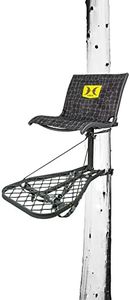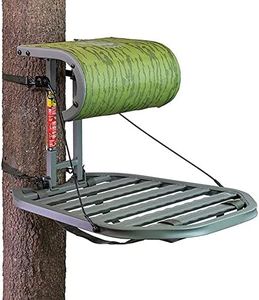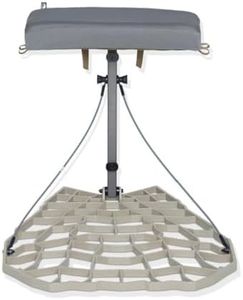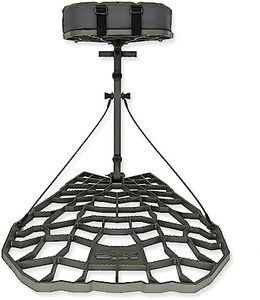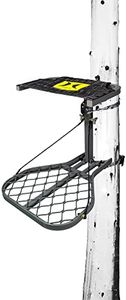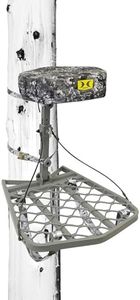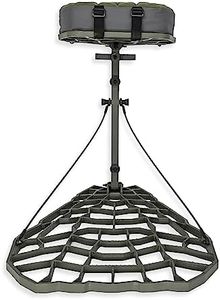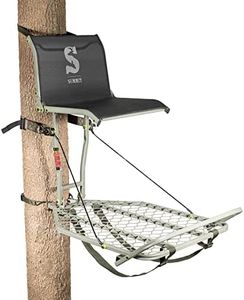We Use CookiesWe use cookies to enhance the security, performance,
functionality and for analytical and promotional activities. By continuing to browse this site you
are agreeing to our privacy policy
10 Best Hang On Treestands
From leading brands and best sellers available on the web.By clicking on a link to a third party's website, log data is shared with that third party.
Buying Guide for the Best Hang On Treestands
Hang-on treestands are popular equipment for hunters who want flexibility and stealth while setting up in trees. When choosing a treestand, it's important to understand that your safety, comfort, and the type of hunting you plan to do are all critical. Focus on the features that match your hunting style, physical ability, and how far you need to carry your stand. Knowing the key specifications will help you make a choice that keeps you both safe and comfortable, and ensures your success in the field.Weight CapacityWeight capacity is the maximum amount of weight the treestand can safely support, including your body weight and any gear you bring. This number is essential because exceeding it can be dangerous and might cause the treestand to fail. Treestands are typically rated between 250 and 350 pounds. If you’re a lighter person with minimal gear, a lower capacity could suffice. For those carrying lots of gear or with a heavier build, look for a higher rating to ensure safety.
Overall WeightOverall weight refers to how heavy the treestand itself is. This matters because you usually have to carry the stand from your vehicle to your desired spot, sometimes over rough terrain. Lightweight stands are often under 15 pounds and are best for hunters who need to hike long distances, while heavier stands, over 20 pounds, may offer more comfort but are harder to transport. Consider how far you'll be carrying the stand to decide the right trade-off for convenience and comfort.
Platform SizePlatform size is about how much standing room you have on the treestand. A larger platform gives more space to move and change shooting positions, but also adds weight and may be harder to set up in tight tree spaces. Generally, platforms range from small (around 20”x20”) for portability, to larger (24”x30” or more) for extra comfort and freedom of movement. If you mainly sit and wait, a smaller size may work, but if you stand or like space to readjust, a bigger platform is best.
Seat ComfortSeat comfort involves the padding, size, and design of the seat on the treestand. A comfortable seat is important for those who spend long hours hunting, as it can reduce fatigue and help you stay focused. Seats can be basic, with minimal padding, or deluxe, featuring thick cushions and backrests. If you hunt for short periods or move often, basic seating is usually fine. For all-day hunts, look for extra padding or ergonomic designs to keep yourself comfortable.
Attachment SystemThe attachment system is how the treestand connects to the tree, typically using straps or cables. A strong, easy-to-use system enhances both safety and the time it takes to set up. Simpler strap systems are lighter but may not grip the tree as tightly as cable systems, which can provide a more secure fit but often add weight. If you often set up in the dark or under pressure, go for systems that are quick and straightforward to lock in place.
Tree Size CompatibilityTree size compatibility refers to the range of tree trunk diameters the stand can fit. Not all treestands can be attached to any tree—some only work with a certain size range. If you often hunt in areas with smaller or larger trees, make sure your treestand’s attachment system lists compatibility that fits these sizes. This ensures the stand will have a secure fit and that you won’t be limited in where you can hunt.
Noise LevelNoise level measures how much sound the stand makes during setup, use, or when adjusting positions. Quiet stands are important because animals have sharp hearing and can be easily scared away. Lighter, simpler stands may creak less, while more complex or metallic stands can make noise if not well-padded. If stealth is crucial to your strategy, look for stands with rubberized or coated parts and check user feedback on how quiet they are during real use.
